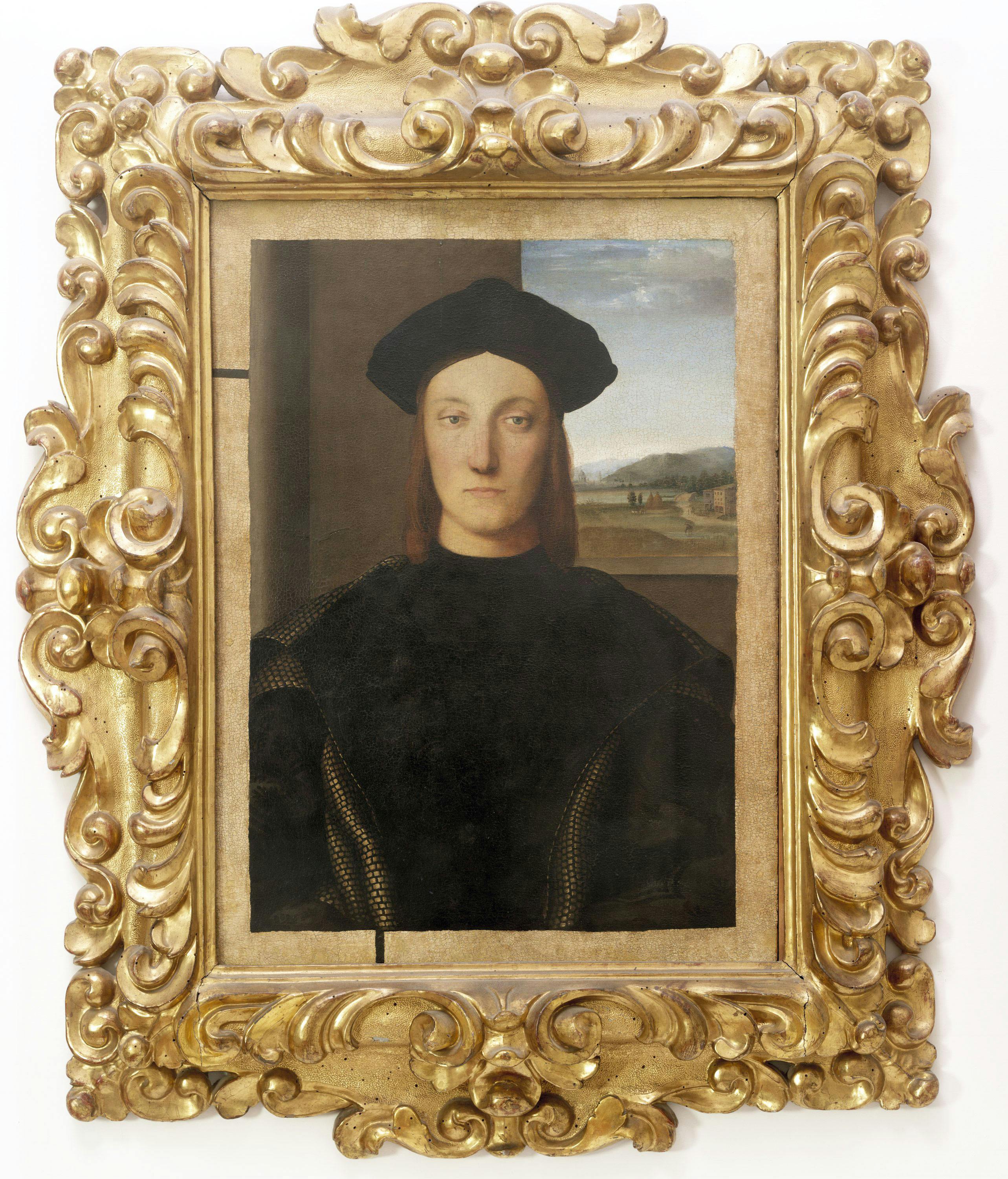Portrait of Guidubaldo da Montefeltro
Raphael (Urbino 1483 – Rome 1520)
Raphael has chosen a simple interior for the young and noble subject, the most distinctive feature of which is the wide-open window overlooking a serene landscape of hills and small villages sloping down in the distance, revealing, in the background, the outline of a city. The sober but elegant attire consists of a black robe and shirt complemented by the 'robone', a loose velvet jacket typical of Renaissance fashion, here edged with a distinctive gold trim [possibly a type of brocade, see Cinzia Maria Sicca Bursill-Hall - Bound by golden threads: Holbein, the Tudor court and Florence, conference held on 7 October 2020]. These are the two symbolic colours of the Montefeltro family, the same colours that also appear on Elisabetta Gonzaga's dress in the pendant portrait in the same room.
The person portrayed is Guidubaldo (1472- 1508), son of Federico da Montefeltro and Battista Sforza, the last descendant of the family because he died childless, leaving the title and dukedom to his nephew Francesco Maria della Rovere. His identification is ensured through comparison with a reliable portrait of the young Montefeltro, which is illustrated on the title page of a manuscript at the Vatican Library. A skilled military leader and a fine student of the arts, Guidubaldo was forced to leave Urbino in 1502, following the invasion of Pope Alexander VI's troops, led by his son, Cesare Borgia. The rise to the papal throne of his brother-in-law, Julius II della Rovere, made it possible for Guidubaldo to return to Urbino in 1504 to reign there until his death in 1508.
The centrality of the figure and the highlighting of the pale face against the black hue of the robe, the restrained and fixed expression of the eyes, give this portrait the solemn and severe air typical of official representations. At the same time, the luminous complexion and the way the scene is structured show us how Raphael had embraced the Flemish painting that he had studied since his formative years in Urbino, taught by his own father Giovanni Santi, a very learned painter working for Federico da Montefeltro. The dating of the painting, much debated by scholars, is generally placed in the earliest days of Raphael's Florentine period.
Raffaello a Firenze. Dipinti e disegni delle collezioni fiorentine, catalogo della mostra (Firenze, Palazzo Pitti, 11 gennaio - 29 aprile 1984), a cura di L.Berti e M.Chiarini, Firenze - Milano 1984, pp. 64-68; B. Montevecchi, in Raffaello e Urbino. La sua formazione e i rapporti con la città natale, Urbino 2009, pp. 182-183.
Portrait of Elisabetta Gonzaga, Duchess of Urbino
Raffaello Sanzio (Urbino 1483 – Rome 1520)
